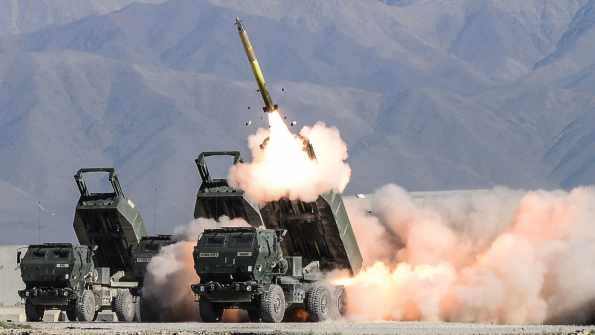
Lockheed Martin will begin a series of flight tests next month on a new version of the Guided Multiple Launch Rocket System (GMLRS) with twice the range, a company executive said Oct. 13.
The GMLRS-Extended Range (ER) will begin a series of seven missile firing tests in November at White Sands Missile Range, New Mexico, Lockheed VP for precision fires and combat maneuver systems Gaylia Campbell said.
The Army launched the GMLRS-ER program to extend the range of the guided rocket to 150 km (93 mi.).
To achieve the extra range within the same form-factor, Lockheed integrated a more efficient rocket motor and increased the internal volume by reducing the width of the casing wall, Campbell said.
Meanwhile, Lockheed also is preparing for the next round of tests and contract activity in the Precision Strike Missile (PRSM) program.
Following three successful flight tests this year, Lockheed expects to perform three more flight tests involving four missiles in the second half of 2021, Campbell said.
The Army plans to release a request for proposals early next year for the engineering and manufacturing development (EMD) contract for the Urgent Material Release (UMR) version of PRSM, which will be delivered in fiscal 2023.
Raytheon withdrew a bid earlier this year for the EMD contract after a technical flaw emerged with its DeepStrike missile design.
The UMR version scheduled to become operational in three years will lack a terminal seeker.
An Army Research Laboratory seeker for the Increment 2 version of PRSM entered flight testing on a surrogate aircraft earlier this year. The Army plans to introduce the Increment 2 missile in fiscal 2025 with the same range as the Increment 1 missile, which is set at more than 500 km. The seeker will give the missile the ability to strike moving targets, including tanks and ships.
The Army also plans to introduce follow-on increments of PRSM with greater capabilities, including significantly more range and different warheads.

